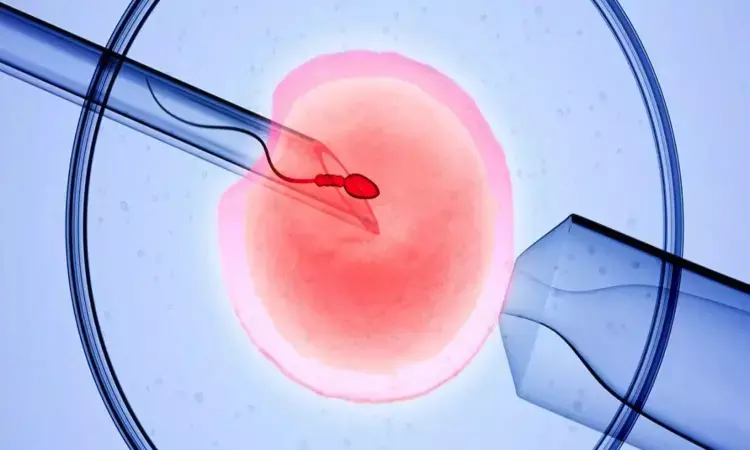- Home
- Medical news & Guidelines
- Anesthesiology
- Cardiology and CTVS
- Critical Care
- Dentistry
- Dermatology
- Diabetes and Endocrinology
- ENT
- Gastroenterology
- Medicine
- Nephrology
- Neurology
- Obstretics-Gynaecology
- Oncology
- Ophthalmology
- Orthopaedics
- Pediatrics-Neonatology
- Psychiatry
- Pulmonology
- Radiology
- Surgery
- Urology
- Laboratory Medicine
- Diet
- Nursing
- Paramedical
- Physiotherapy
- Health news
- Fact Check
- Bone Health Fact Check
- Brain Health Fact Check
- Cancer Related Fact Check
- Child Care Fact Check
- Dental and oral health fact check
- Diabetes and metabolic health fact check
- Diet and Nutrition Fact Check
- Eye and ENT Care Fact Check
- Fitness fact check
- Gut health fact check
- Heart health fact check
- Kidney health fact check
- Medical education fact check
- Men's health fact check
- Respiratory fact check
- Skin and hair care fact check
- Vaccine and Immunization fact check
- Women's health fact check
- AYUSH
- State News
- Andaman and Nicobar Islands
- Andhra Pradesh
- Arunachal Pradesh
- Assam
- Bihar
- Chandigarh
- Chattisgarh
- Dadra and Nagar Haveli
- Daman and Diu
- Delhi
- Goa
- Gujarat
- Haryana
- Himachal Pradesh
- Jammu & Kashmir
- Jharkhand
- Karnataka
- Kerala
- Ladakh
- Lakshadweep
- Madhya Pradesh
- Maharashtra
- Manipur
- Meghalaya
- Mizoram
- Nagaland
- Odisha
- Puducherry
- Punjab
- Rajasthan
- Sikkim
- Tamil Nadu
- Telangana
- Tripura
- Uttar Pradesh
- Uttrakhand
- West Bengal
- Medical Education
- Industry
Even very small amounts of elements in follicular fluid may impact IVF success rates: Study

Though exposure to "trace" (an extremely small amount) elements has been shown to affect ovarian functions in experimental studies, there has been little research on the impact of trace levels of non-essential elements, such as lead (Pb) and mercury (Hg), on female reproduction. Studies have shown that high levels of these non-essential elements may lead to decreased female fertility and reduce the likelihood of getting pregnant. Taken together, this evidence raises concern about the potential negative impact of exposure to trace levels of non-essential elements on human reproduction.
In a new study from George Mason University researchers and funded by the National Institute of Environmental Health Sciences (NIEHS), some trace elements measured in ovarian follicular fluid were associated with differences in ovarian response to in vitro fertilization (IVF), which in turn, may affect the chance of getting pregnant. Trace elements are measured in very small concentrations with units such as parts per million or parts per billion.
“By studying the association between trace elements and ovarian response to IVF, we aim to better understand factors that may influence conception. Ultimately, the goal is to provide guidance for patients and clinicians in strategies to improve their chances of a successful pregnancy in IVF treatment,” said Michael S. Bloom, the principal investigator and professor in the Department of Global and Community Health. “Associations between follicular fluid trace elements and ovarian response during in vitro fertilization” was published in the July 2024 issue of Environmental Research.
“This study is unique because we used follicular fluid which is in direct contact with the developing egg to measure concentrations of trace elements. We found that elements may play a beneficial or detrimental role in reproductive health through ovarian function,” said Rooshna Mohsin, first author and George Mason Ph.D. in Public Health student.
Higher concentrations of cobalt (Co) and copper (Cu) in ovarian follicular fluid were associated with a stronger ovarian response, possibly increasing the likelihood of getting pregnant. However, higher concentrations of lead (Pb) were associated with a reduced number of ovarian follicles than in lower concentrations, which may result in a lower chance of achieving pregnancy.
Researchers also found that low antioxidant levels (called oxidative stress) were associated with higher levels of some metal elements and may play an important role in the associations that were found between follicular fluid trace elements and ovarian function.
This was a clinical observational study of 56 couples using IVF to conceive a pregnancy. Researchers collected follicular fluid from people’s ovaries after the egg was removed, during the routine IVF procedure, measured levels of different metals and other elements in the ovarian follicular fluid, and tested for statistical associations between the follicular fluid metals and measures of ovarian function.
Reference:
Rooshna Mohsin, Victor Y. Fujimoto, Aubrey L. Galusha, Patrick J. Parsons, Jenna R. Krall, Celeste D. Butts-Jackson, Evelyn Mok-Lin, Michael S. Bloom, Associations between follicular fluid trace elements and ovarian response during in vitro fertilization, Environmental Research, https://doi.org/10.1016/j.envres.2024.118801.
Dr Kamal Kant Kohli-MBBS, DTCD- a chest specialist with more than 30 years of practice and a flair for writing clinical articles, Dr Kamal Kant Kohli joined Medical Dialogues as a Chief Editor of Medical News. Besides writing articles, as an editor, he proofreads and verifies all the medical content published on Medical Dialogues including those coming from journals, studies,medical conferences,guidelines etc. Email: drkohli@medicaldialogues.in. Contact no. 011-43720751


